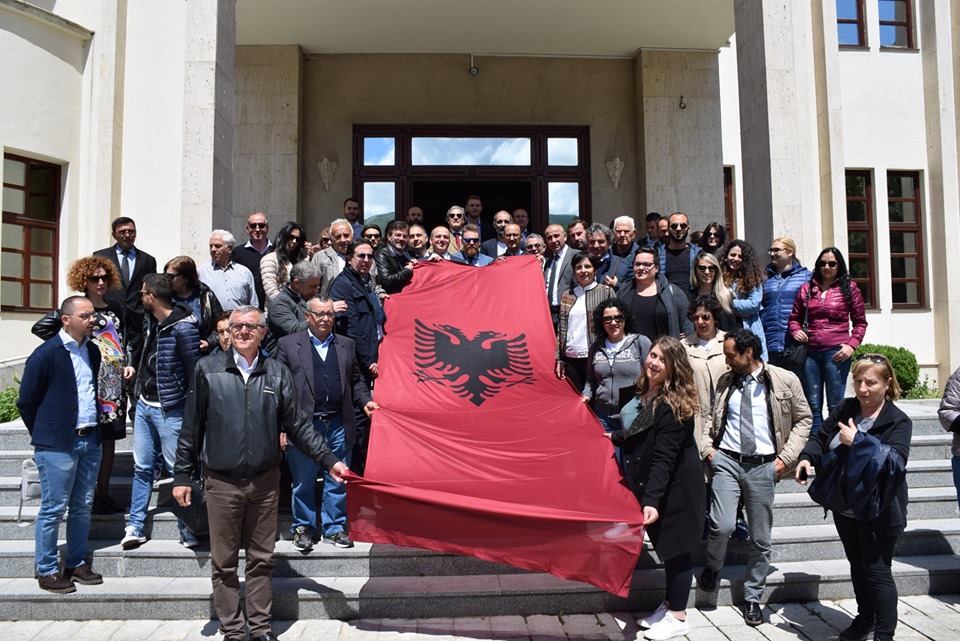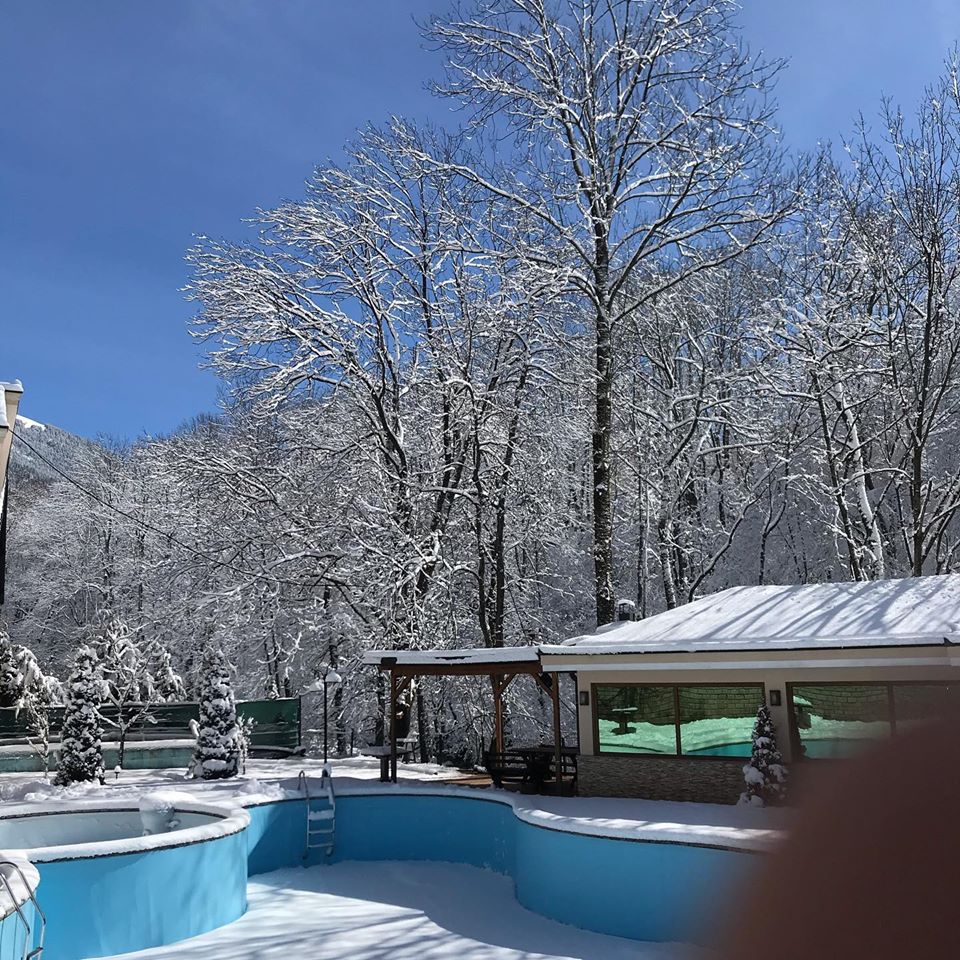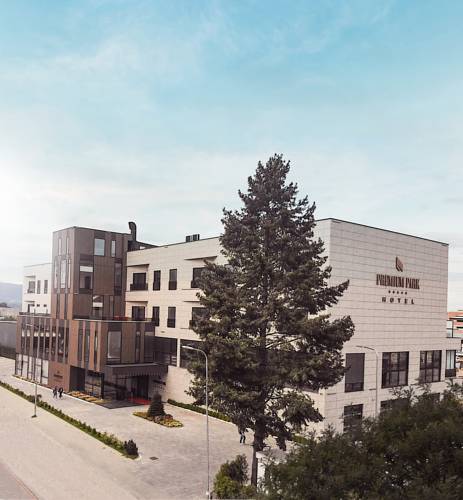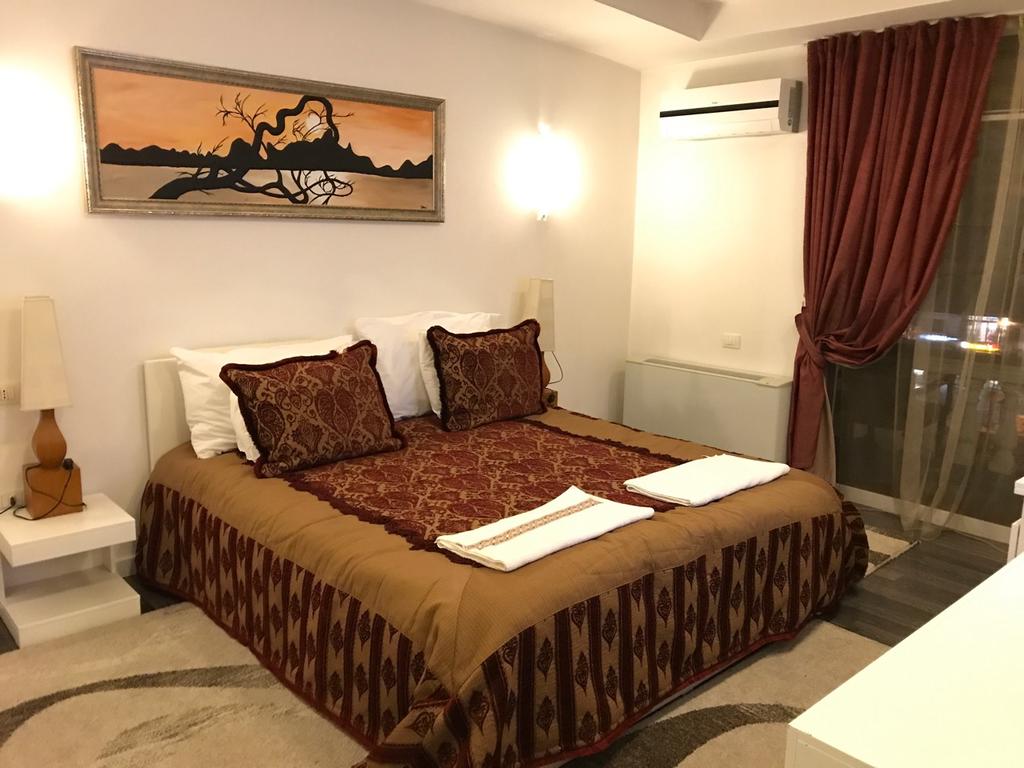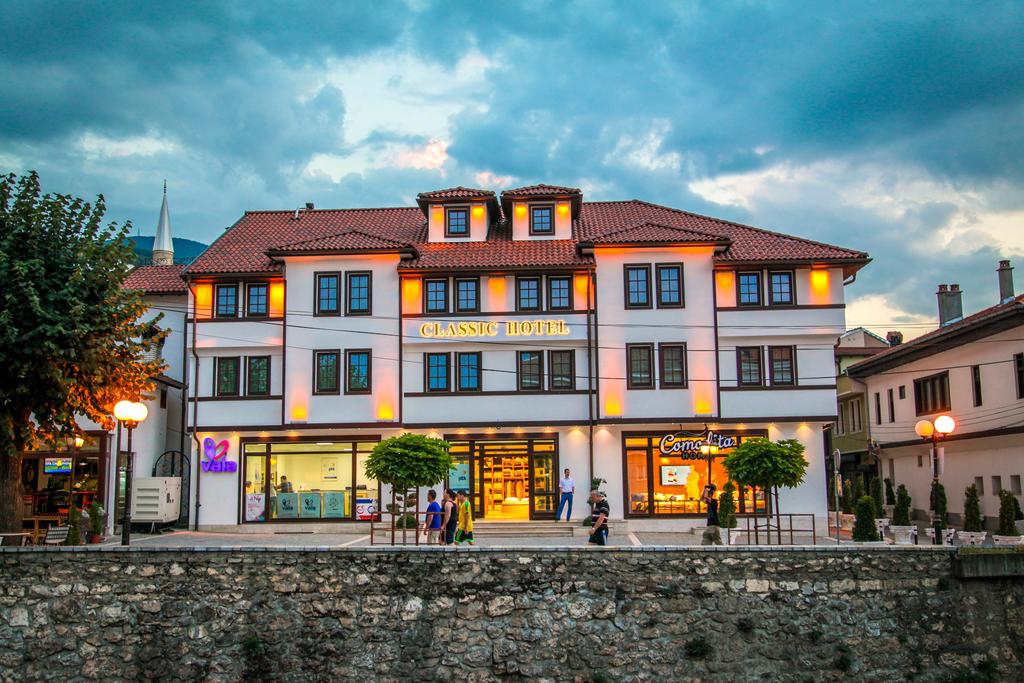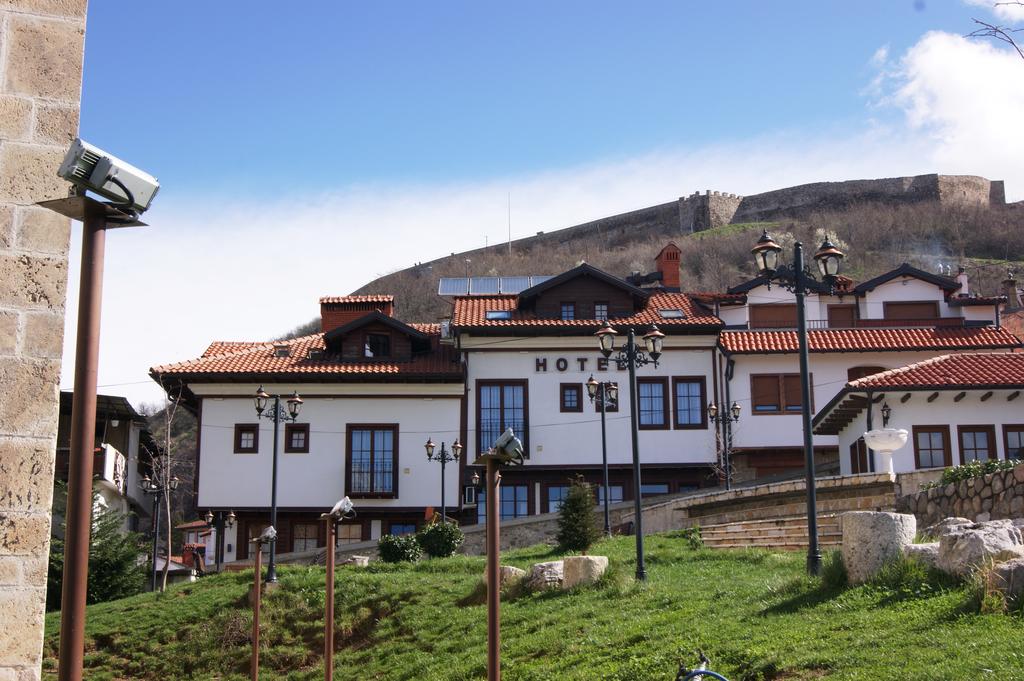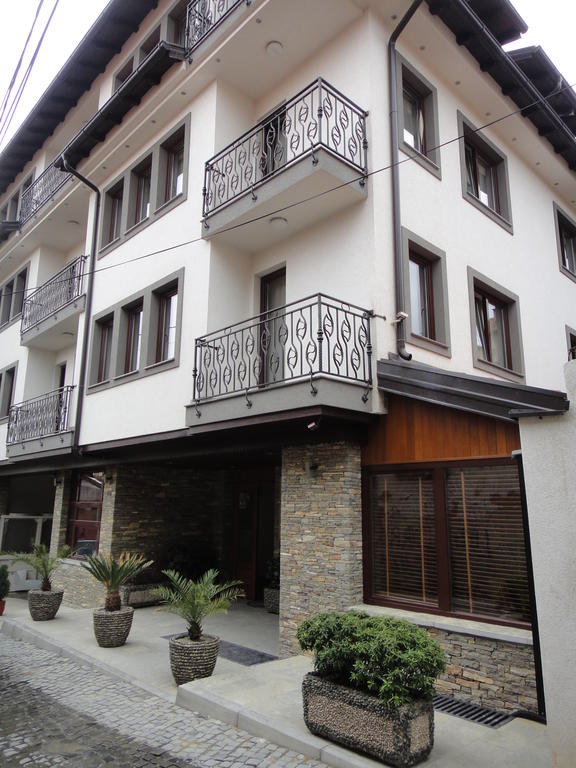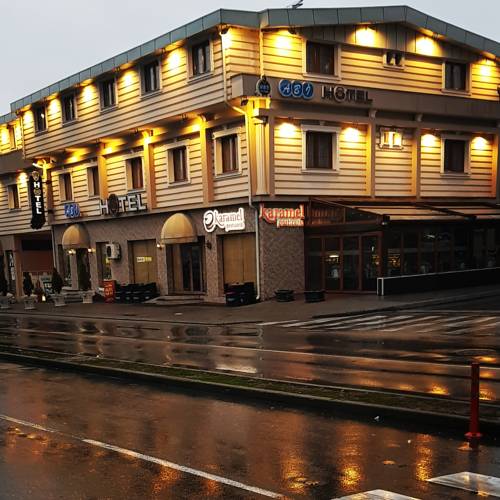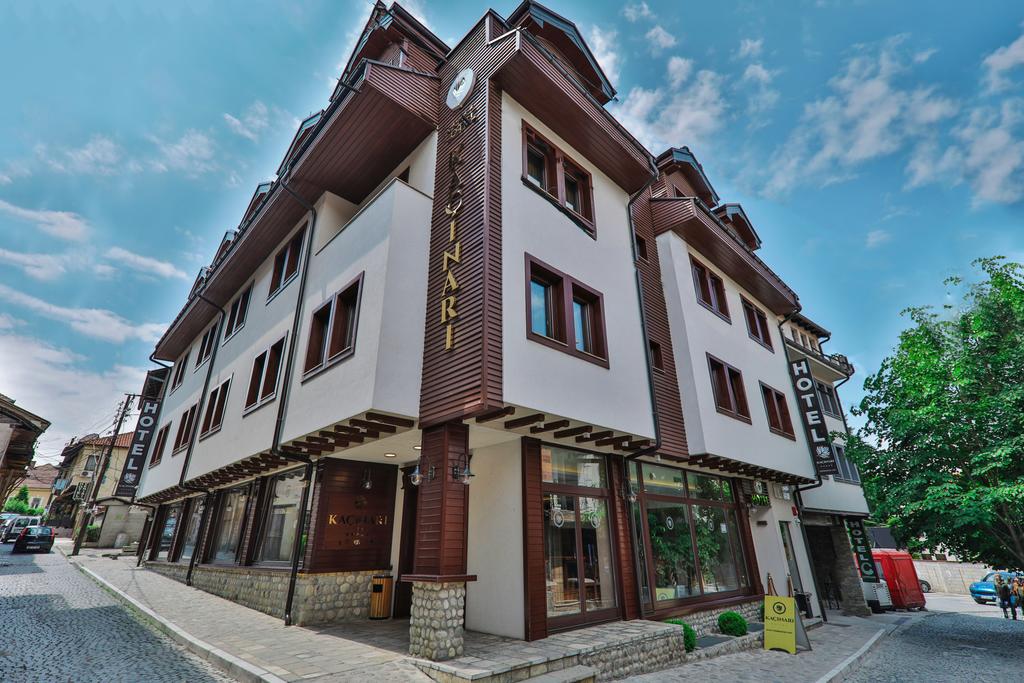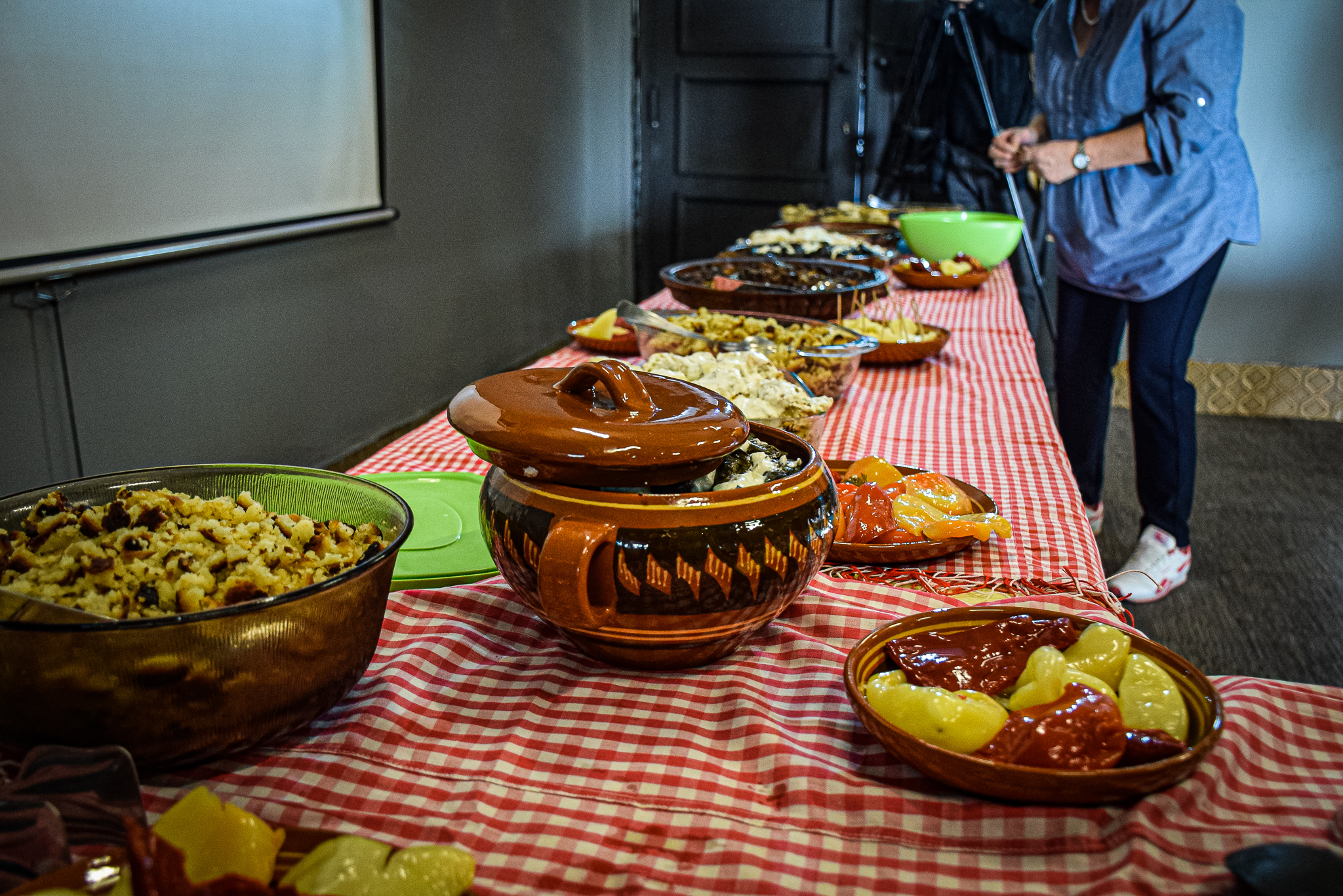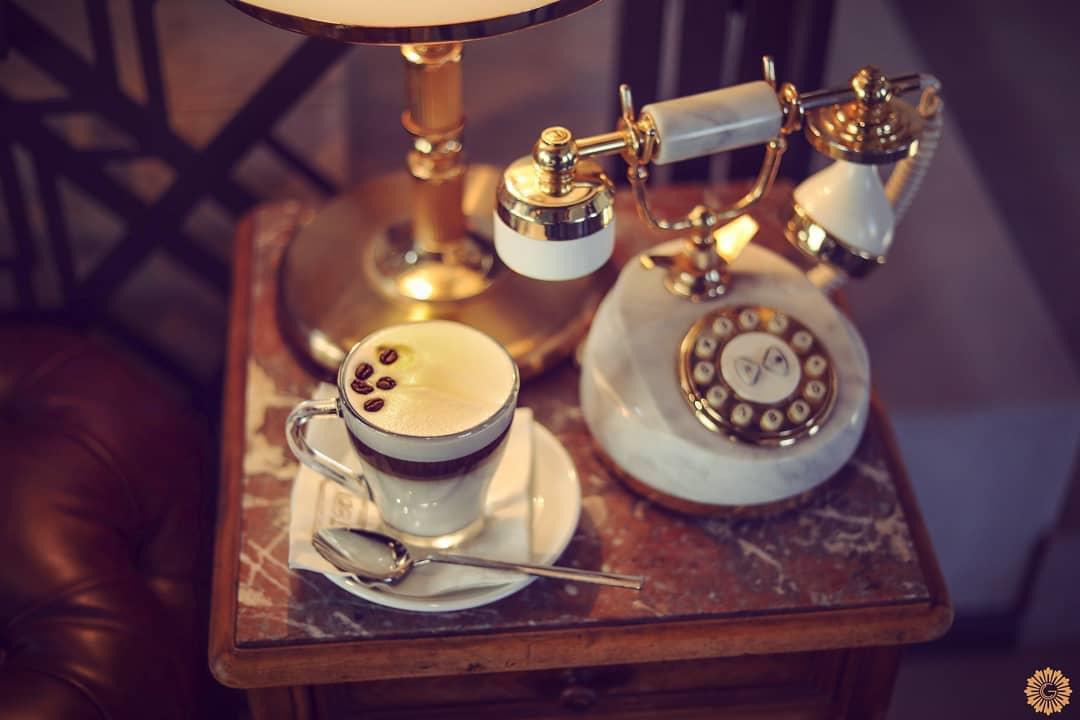Welcome
to the
Historical Capital City
Guidelines
Map
WELCOME IN PRIZREN
Kosovo has a lot of beauty, but among the most beautiful cities is Prizren. This city has many historical and religious objects, but it is distinguished by its hospitality. Historically this city is the meeting place of different cultures and the place of religious tolerance.
Sinan Pasha Mosque
It was constructed by Sinan Pasha in 1615. The Mosque interior is composed of a unified space with a doom rich in floral and geometrical motifs painted in three stages. Two first stages of mural paintings date back in XVI-XVII century, and are made in al seko technique, while the third stage belongs to XX century, and is made in baroque style where the blue motifs prevail. Close to Mosque stairs, on the right side of entrance a stone decorated fountain is located for abdes(religious ritual), but it is also used for citizens to drink water. It is considered as a unique Mosque, with original architecture in line with Prizren city.
St. Spas Church
The St. Spas Church is located in the Historical Centre of the city, namely in the south-eastern side of Nen-Kalaja. This church as property of Mladen Vladojevic and his mother and that it was built between 1333-1335 while in 1348 it was donated to the Archangel Monastery. In the second part of the XVIII Century, the Vlach (Aromanian) community in Prizren obtained the right to use the church for their needs. Based on the shapes and techniques in construction, the monument is assumed to pertain to the first half of the 14th century. During the years 1953-1963, the church was taken under conservation. During the period 2010 – 2011, the UNESCO undertook restoration works in the church, thereby restoring structures of walls, roofing and interior.
PRIZREN FORTRESS
Prehistoric, Roman and Late Antiquity cultural layers are preserved under its walls. The life here began back in the Late Bronze, and the fortress was built around 1500 years ago. The Fortress now has massive walls and various residing quarters belonging to later stages, such as medieval and Ottoman times. Through a systematic research, conservation and restoration work, it will be transformed into an open archeological museum and an important destination point for the cultural tourism of Prizren and Kosovo in general.
St. George – Runovic Church
It is located in Shadërvan Square, in the courtyard of St. George Synodic Church. The church was constructed at the end of XV and beginning of XVI century, by brothers Runovic, and was dedicated to St. George. The facility belongs to the type of medieval family churches with rectangular foundation, absida, and it used to have three naves. Today it has only one nave. Recently the narthex and cemetery around the church, including the graves of brothers Raunovic, were also discovered. On the south-western part of the church, the grave of Metropolitan Mihajlo (1733- 1818) is located. The frescoes dating back in XVII century can be seen inside the church.
Kisha Katolike Zoja Ndihmëtare
Gjendet ne jugperendim te qendres urbane te qytetit, te Qafa e Pazarit. Objektin me elemente te arkitektures greko-romake, ne vitin 1870 e nderton aeqipeshkvi Dario Bucciareli ne themelet e kishes se dikurshme, kurse me vone Toma Glasnoviqi ngriti kumbanen dhe vendosi oren.
Archaeological Museum
The Archaeological Museum (Sahat Kulla) is located in the area of the hamam, built at the end of the XV century, respectively in 1498. The peculiarity of this building is that within the hamam was built Sahat Kulla, two objects that have no functional connection at all. among themselves and presents a unique case due to such interweaving.
THE COMPLEX OF ALBANIAN LEAGUE OF PRIZREN
On 10 June 1878, the convention of the Albanian League of Prizren was held here. It was organized by Albanian intellectuals of that time as a result of the need to protect the Albanian lands and to establish an autonomous Albanian state. This building of this Complex was initiated after the construction of Gazi Mehmet Pasha Mosque, and later on other facilities were built in its vicinity, such as the Prizren League object, Madrasa, Turbe, Library and residential facilities. In 1978 the Complex was transformed into Prizren League Museum.
Kisha e Levishës
Gjendet në Zonën Historike të Prizrenit u rindërtua me urdhërin e mbretit Millutin, më 1306/7. Kjo kishë është i vetmi monument në qytet që hyri në listën e Trashigimisë Botërore në Rrezik të UNESCO-s në vitin 2006.
Marash Mahala Complex
On the left side of Lumbardh River, under the Castle, in the eastern area of Prizren, we have the Urban Complex of Marash. In Arabic, “marash” means a refreshing place. This complex is rich in underground waters and streams of the Lumbardh River. With the transformation in years, natural and cultural heritage resources, and its favorable position, the Marash Complex represents an important site for the whole tow.
BIMBASH FOUNTAIN
Prizren is known for the considerable number of public springs. Kroi Binbashi is located west of the historic area of Prizren, near the "Iljaz Kuka" mosque and the Beledija building. The long-built spring to this day serves as the neighborhood's public fountain, supplying residents and passers-by with drinking water. The spring is made of rectangular limestone.
TEKKE OF HALVETI ORDER
It was established in Saraçhane neighborhood at the end of XVII century and beginning of XVIII century (1690-1713) by Sheh Osman Baba in the very close vicinity of the Kukli Beg Mosque. It is also known as the Sheh Hasani Tekke. Except for the grave of Sheh Osman Baba, also the graves of seven other members of Halveti order are located there. The Tekke complex is composed of the following: Tekke (with some special rooms), semahane – prayer room, shrines where the Tekke leaders (shehs) were buried, cobblestone courtyard with the element of water running from two marble fountains, residential house of Sheh Hasan and commercial building.
GAZI MEHMET PASHA HAMMAM
It was built in 1563-74 by Gazi Mehmet Pasha, Sanjak Beg of Shkodra. In its main gate there is a plaque with inscription dating back in 1883 showing the restoration date of hammam by Mahmut Pasha Rrotulli, Mutesarif of Prizren Sanjak. Together with Daut Pasha Hammam in Skopje and Gazi Nusret Beg Hammam in Sarajevo are amongst the most prominent sites of Ottoman architecture in Balkans. The Gazi Mehmet Pasha Hammam is of “çifte hamam” – pair type. It has two parts with separated entrances that were used by both men and women at the same time.
MEHMET PASHA MOSQUE
Gazi Mehmet Pasha built the complex with mosque, turbe, madrasa, library, classroom and other supporting facilities during 1563-74. The complex is linked with the Complex of Albanian League of Prizren. It has a squared layout with protruded porch on three sides, and central praying space covered with an impressive doom. The porch is covered with three-pitched roof supported by wooden pools. The doom is decorated with mural paintings with geometrical and floral motifs. The minaret is 40m high. This is one of the biggest mosques of Prizren.
KABASH - KORISH
The Municipality of Prizren has implemented many projects. Among them is the project in the village of Kabash - Korisha. The beauties of Prizren are not limited to the city, but also to the surrounding region. A rare natural beauty is the one in the village of Korisha, respectively in the waterfall and the castle of this village.
Suzi çelebi bridge
It is also known as Tabakhane Bridge since it is located in the area of craftsmen dealing with leather processing and linked the Ta - bak Complex. Suzi Çelebi built it in 1513. It used to have three arches, one bigger in the middle and two smaller ones on its sides. The bridge was paved in Turkish cob - blestone, while the sidewalls were made of carved stone solidified with iron bars. The big and small arches were destroyed by floods. The bridge was reconstructed in 2000, but this reconstruction is considered to have no values.
Beledija Bridge
Beledija is the first building of the Municipal Assembly of Prizren built at the end of the century. XIX th. The people call the bridge near it the Beledija Bridge. Beledija is the best evidence of the political and administrative culture of Prizren, while today the building serves as a source and training center for cultural heritage.
Ura e Rinise
Lanet Bridge
Lanet Bridge is one of the most mentioned and special bridges in Prizren. The bridge, which has a blue border, is also considered a bridge of love, as every visitor and couple has locked their love keys. According to this tradition, this bridge is now known as the bridge of love.
Stone Bridge
PRIZREN It directly connects the Shadërvan Square with the old Saraçhane road. Based on construction material and structure, it is assumed that the Bridge was built in XVI century. The old Bridge was made of quality stone processed and connected with lime plaster. The sides are solidified with iron bars embedded in stone holes. It has three arches: the middle arch is lager, while the side arches are smaller. The length of the former bridge was approximately 30 m, while its today’s length is 17 m. Over the time, the Bridge saw major changes.
Ura e Therandes
Ura e Lidhjes
Kino Lumbardhi
Kino Lumbardhi opened in 1952 and operated as a cinema until 1999. Characterized by an indoor hall and a summer cinema, Lumbardhi had a capacity of over 1,200 seats and received over 300,000 visitors a year for decades. With a repertoire of Yugoslav, Western, Indian and Hollywood films, the cinema has bridged generations of Prizren with each other and with people all over the world. As one of the two cultural institutions of the city, the cinema was a host of concerts, festivals and various social events, while since 1986 it was also the host of a festival named Zambaku i Prizrenit (Lily of Prizren). After the war, the cinema was identified with the DokuFest documentary and short film festival that started in 2002 and two civic initiatives to protect it from privatization and demolition in 2007 and 2014. Since 2015, Kino Lumbardhi enjoys the status of protection as a cultural heritage monument and operates as an independent cultural institution.
Nashec
Nasheci is a settlement in the municipality of Prizren. After 1999 the village is also known as Syzi. Although the excavations have not been completed yet, it is said that this locality dates from the Bronze Age and has a great historical importance and value for Prizren.
Ujevara e Kabashe Korishe
Ujevara e Kabashe Korishe
Gorozhup
Gorozhup is a village in the Has region, municipality of Prizren. After 1999 the village is also known as Gurisht. It is characterized by the presence of a mill known as the Mill of Sylejman Tanës, which according to the information found was built in 1854 and is geographically located on the banks of the Drini i Bardhë.
Zhupa
Zhupa
Pasha Qesme
Pasha Qesme
Jabllanice
Jabllanice
Shtepia Malore
Shtepia Malore
Vermica
Vermica is a village in the municipality of Prizren. It is a tourist village and as a specialty it has fish cooking. In this area there are many restaurants for preparing fish dishes. Location itself presents an attraction of water tourism, respectively fishing and at the same time gastronomy tourism.
UJI GROPOSUR – “ KOPANAVODA”
It is a mountain destination with an altitude of 1574 m and is characterized by pronounced vegetation and abundant water resources. It is one of the favorite destinations of the sport of Hiking for the region of Prizren. At the existing location there is also a building in which tourists can find accommodation. With further improvement of infrastructure and accommodation capacities, this location has all the premises to become an attractive tourist destination, both for the sport of hiking as well as for the stationing and camping of visitors.
NAMAZGAH, KEREK MOSQUE
This is one of the oldest Muslim religion sites in Kosovo. Namazgah in Persian means: place of prayers. After the fall of Prizren under the Ottoman rule in 1455, Isa Beg built the Namazgah – e place that served for the performance of religious rituals of the Ottoman army. After the establishment of the fully fledged Ottoman administration in Prizren, Namazgah was left in neglect, as this was the time when the construction of regular mosques began. Later on, this site was used as prayer shrine for the farmers who would work in their close-by lands. It is also known as Kerek Mosque, which in translation means broken mosque. The site was restored in 2002.
Reqan
Reqane is one of the well-known and favorite places for weekends by the citizens of Prizren and other places of Kosovo and Albania. The village of Reqane, populated by Bosniaks and Gorani, offers various specialties and very tasty meat and fish food dishes. The rocky mountains of Reqane reach a height of one kilometer, creating the impression of covering the sky and entering another natural reality, covered with rocks and stones. Along the road to Prizren there are 13 caves at a height of 960 meters, which have been used for shelter by monks and are decorated with frescoes. Lumbardhi river is the faithful companion of the entire journey along the road to Prizren, being the only break of monotony and absolute calm in certain places.
Shatervan Fountain
In the Historic Zone of Prizren, near the mosque "Sinan Pasha" is the Kroi i Shatërvanit. It is assumed that it was built in the 15th century. XVII (after the construction of the mosque "Sinan Pasha". The fountain of Shatërvan is located in the middle of Shatërvani Square, and with its characteristic position, shape and decorations, it is one of the symbols of the city and at the same time the most characteristic well preserved to this day. today.
Bazhdarhane
CHURCH OF ST. PARASCHEVA
It has 7 construction or reconstruction stages: the Roman temple of II-III century; three-nave basilica of V-VI century; Basilica built on the foundation belonging to previous construction, XIcentury; discovered frescoes, such as “Virgin Mary with baby Christ” and “Weeding in Henna”, XIII century; reconstruction by king Milutin, XIV century; transformation of the church into mosque, that was called Xhuma Mosque, supposed to have taken place in XVXVI century; occupation of Prizren by Serbs in 1912, destruction of minaret, placement of belfry and re-transformation into church. This is the only cultural heritage site in Prizren under UNESCO protection.
St. Nicolas Church
In the Milacic Settlement, in the centre of the Sredska Village, next to the primary school, there is a church in tribute to St. Nicolas, built around 1875. The roof has two gutters, covered in lead and tin sheeting. The Church façade also has several semi-circular openings and niches, with semi-circular arches. The church interior is rich in iconostas, worked in wood and icons. The church yard also holds the village cemetery
Old Municipal Building
The Beledie Building - Assembly was built in the Tabakhane neighborhood in the 19th century and served as a municipality for the Ottoman authorities in Prizren. In the years 2010/2011 with donations from the European Union - Office in Kosovo, the complete restoration of the building is done, in which case the building is transformed into the first Regional Center for Cultural Heritage in the Balkans. In addition to the training center, in this building there is also the Tourist Information Office for the city of Prizren. The Beledies building is a unique example of a public, administrative building built during the 19th century. XIX and as such has high historical, artistic and social value.
SUZI ÇELEBI MOSQUE
It was constructed in 1523, and is the second oldest Islamic site in the city of Prizren, and the first one with completely Islamic architecture. It has rectangular layout with fourpitched roof covered in tiles. Its porch has eleven wooden poles and has a three-pitched roof. On top of wooden poles there is arch-shaped decorated capital. Old cemetery of the prominent Muslim leaders is located in its courtyard. The Turbe where Suzi Çelebi and his brother, Nehari in Abdullah, are buried is also situated there. Both of them are also known as the first poets in Prizren
Remains of the Korisha Fortress with the Early Christian Church
The archaeological excavations conducted in two seasons; 2002 and 2004 at the Korisha fortress located at the area known by the toponomy as the ‘Gralishta’ hill.The first archaeological excavations were made in 2002, in which case it was discovered Church of the Paleochristian period. The castle was built in the late antiquity period, respectively in the century. V-VI, which confirm the excavations made in 2002-2007.
HYDRO POWER PLANT MUSEUM (PRIZRENASJA)
It was constructed in 1929 on the Lumbardh riverbank according to a project drafted by a Vienna company. This was the first hydro power plant and the only Museum of Electro-Economy in Kosovo. It’s operations were stopped on 1 November 1973. On 8 November 1979 it was transformed into the Museum of Electro-Economy of Kosovo. This Museum has numerous original materials and photographs reflecting the development of electro-economy in Kosovo.
Father Shtjefën Gjeçov's hat
At the initiative of the Institute for the Protection of Kosovo Monuments and the competent bodies of the village of Zym, in the 1960s the chapel of Father Shtjefën Gjeçov was built in the village cemetery. The hat has a rectangular plan with small dimensions. In the northern part there is an apse with a semi-circular base. The entrance to the chapel is through a wooden door, made with a semi-circular opening, towards the south side.
St. Sunday Church – St. Mary’s Revelation
This church is located in the Historical Area of Prizren. Its ruins, apsidal walls and southern wall have been discovered in 1966 during archeological diggings. Diggings unveiled stone fragments. In one of these stones an inscription of the year 1371 was found. The church was reconstructed 1995-1997, in line with analogy and typology of cult objects of that time. The church has a rectangular shape with a dome, which seen from outside is octagonal. Its dimensions are small compared to other churches in Prizren.
ST. GEORGE CHURCH, SRECKA
It belongs to the Late Medieval times, namely to XVI century. It is a church of small dimensions, one nave with semi-circled absida. Walls are built of rives stones with mud mortar and painted with limestone paint. The roof is dual pitched covered in roof tiles. The niche is located on top of entrance door. On its upper part the mural of St. George on the horse can be seen. The frescoes of saints are still preserved in the church interior.
ST. NICOLAS-TUTIC CHURCHE
It was constructed in 1331 by Dragoslav Tutic (priest Nikola) and his wife Bela; this can be proved with a stone inscription on a southern wall of church. The church has one small size nave, and its shape is rectangular. It is made through a combination of stone and bricks. Its frescoes are small in numbers and fragmented. A fresco that is in a better shape is the one of St. Nicholas. This church belongs to the type of family churches, of Byzantine style, and it was used for the needs of believers living around the church.
ST. NICHOLAS CHURCH, BOGOSHEVC
It was built on top of a terrace plateau with a steep riverside. It has one nave, rectangular layout and threesurface abside on the eastern side. The church has no façade, and the structure of external walls can be clearly seen. The church interior is rich in frescoes. There is an annex in the church entrance, on top of which a belfry was built. Based on architectural features and frescoes, the church belongs to the end of XVI and beginning of XVII century.
ST. NICHOLAS CHURCH, DRAJÇIÇ
The church is small. Its foundation is rectangular and made of stone. The half of church is plastered, while the stones can be seen on the remaining part. The belfry was built in 1925 as a special annex. Frescoes enriching the interior have been painted with a special style, and based on this it is thought that the church belongs to the last decade of XVI century. The frescoes painted in wood can also be seen in its interior. During the different time periods some restoration has taken place, thus changing the original architecture of church
ST. NICHOLAS CHURCH, MUSHNIKOVË
This is a small one-nave church, with rectangular layout. The church was built in stone and does not have a façade. It has a dual-pitched roof made of stone plates. Over the years, an annex was built on the western part of church, which does not correspond with the old church. Based on the typology of frescoes painted in the old church, it is assumed that the church was built in last decade of XVI century.
CHURCH OF ST. PARASCHEVA, MUSHNIKOVË
Initially it was dedicated to St. Peter and St. Paul. This is proved by the fresco of these two saints, painted in the southern wall of church interior. It is a one-nave church of small dimensions, with protruding absida. The internal construction is made of semi-circled mud bricks. The church has a twopitched roof made of stone plates. Based on frescoes, the church was constructed in 1563-1564.The octagonal belfry was built close to it in 1920.
THE COMPLEX OF KARABASH SHRINES
It is composed of three shrines.The Karabash Baba Shrine is located in the middle of three shrines. It has hexagonal shape with conic roof. The Sheh Hysein Shrine, member of Halveti order. It is located on the left hand side of Karabash Baba Shrine. Its construction took place in 1926. It has rectangular form, with arch shaped wooden door and windows. Tyrbja e Vajzës(Girl’s Shrine) is located on the right hand side of Karabash Baba. Its construction year is not known. It has squared shape of small dimensions; on three sides it has large arched windows covered with wooden bars.
Sinan Tekke Complex
The Sinani Teqe complex is located in the southwestern part of Prizren, in the Terzinj neighborhood. The tekke of the Sinani sect was founded by Sheikh Ali Efendi Rexhep Koro in 1768. The inscriptions were made with a high artistic mastery, in the style of "sulus" and "talik". Due to the lack of function and maintenance, the complex is in a very difficult physical condition.
Multilayer Archaeological Site in Vlashnja
In this locality is proved the continuity of life during some time periods such as early Neolithic (Starcheva culture), late and middle Neolithic (Vinca culture), Eneolithic (Copper period), Bronze Age, Iron Age, Period Hellenistic as well as the periods of late antiquity and the early Middle Ages.
Locality of the Bronze Age of Korisha
The locality of the bronze period of Korisha, was researched during 2006 and had the character of excavation-rescue. Archaeological excavations conducted in two sectors resulted in the identification and discovery of dwellings and residential horizons that are typical and chronologically dated to the Early Bronze and Middle Bronze Ages.
MONASTERY OF ARCHANGELS
It has a surface area of 6500 m2. Monastery was built during 1343 – 1352 by Serbian king, Dusan. It is thought that the construction took place on the top of an old settlement. From what is known, the Serb emperor, Dusan, was buried in the reconstructed Church of Archangels in 1355. Dusan’s grave was discovered in 1927. In the vicinity of this site other graves were also discovered with the same construction; one of them had a plaque with the name of Strazimir Ballshaj, ruler of the Shkodër Principality, inscribed in it.
ARASTA MOSQUE MINARET (EVRENOS BEG MOSQUE)
It was constructed by Evrenos Jakup Beg in 1526 - 1538. Merchants were using it for their prayers. Arasta Mosque preserved its original function until 1960, when the then municipal authorities demolished the Arasta Complex, together with the Mosque. The Minaret was the only part saved from the demolishment. The David Star is specific feature for this minaret, which is carved in it. People say that the Mosque was built by Jewish construction workers and that the David Star identified the builders.
TABAKHANE MILL
It has all elements of a traditional mill, with the entrance, place for horses, place for unprocessed grain, place for grinded grain, miller’s room, water channel, etc. It has rectangular shape made of river stone with mud mortar, and it has wooden roof covered with traditional tiles. It preserves original equipment and items of the time. The grinding process is traditional and it used the power of water to create the friction of stones that grind the grain.
GRAZHDA FAMILY HOUSE
It was built in XVIII century, and restored and adapted in XIX century in a large space with numerous supporting facilities. During (2010-2012) the restoration of roof and façade took place. With its characteristic shape, division in two parts, rich inside and outside artistic decorations, cobblestone courtyard and mutfak (kitchen), this house is an example of residential oriental architecture.
MUSA SHEHZADE’S HOUSE
It was constructed in XVIII century, and it represents the heyday of vernacular architecture. Each floor has two rooms. Their interior is composed of drawers, built-in cupboards and place for taking a bath. Big rooms were also equipped with fireplaces. Ground floor has a porch, guest room, kitchen and store room. The upper floor has a closed balcony, chamber for the cases and dish washing corner. Ceiling, drawers and built-in cupboards are made of carved wood in gjyltavan style or rose style.
Nishani i Suziut
Suzi efendiu in Prizren lived during the century. XV. On the left side of Lumebardhi he built a mosque (mosque without minarets), a reading school (library), a fountain (krua) and a stone bridge. This neighborhood is called Suzi Neighborhood. The name of the famous poet and historian is Muhammed-efendi, son of Mahmud, son of Abdullah, nicknamed "Poet Suzi"
KUKLI BEG MOSQUE – SARAÇHANE
It was constructed by Kukli Mehmet beg in 1534. It was called the Saraçhane Mosque due to its vicinity to the former Saraçhane bazar. Its architecture differs from other Prizren mosques since it has only one main doom covered in stone plates. Its exterior walls are not plastered; the construction material is made of irregular shape river stones with lime mortar. The minaret is built in the southern part close to the front façade. The minaret is hexagonal, and made of carved stone with round plastered body. The mosque interior used to be rich in mural paintings.
Shani Efendi's greeting
Shani Efendi's salamander is located in the area of the historic center of Prizren, in the Farkëtarët neighborhood, with the front part oriented to the south. After World War II it passed into the ownership of blacksmith Ali Shilik. It was used for housing, while one of the shops on the ground floor served as a blacksmith shop. Today, salami is uninhabited, while on the ground floor the shops are open. Greetings with the surrounding facilities are potential for economic, tourism, heritage and cultural development.
Ryzhdije High School
Ryzhdije High School is located west of the Historic Area of Prizren, respectively near the Tabakhana Complex. Ryzhdije High School was opened in 1874 and represents the establishment of new secondary education in Prizren. In historical and social terms, Ryzhdije High School is a proof of the high level of education developed during the century. XIX.
Adem Aga Gjoni House
It was constructed in XVIII century, after this family came from Ujmish in Albania. The house has two floors, with large rooms in both floors of a symmetrical type. It has a corridor in its ground floor and balcony in its upper one. Ground floor has two rooms, storeroom and corridor that is divided ins its inner and outer part. In its upper floor the house has four rooms – two larger and two smaller ones, and a closed balcony.
The family house Arapi
The house of the Arapi family is located in the area of the historic center of Prizren, in the Saraçët neighborhood, with the front part oriented to the south. The house was built in the second half of the 19th century and has been inhabited all along. Today the house is still habitable.
The family house Bërlajolli
The Berlajolli family home is located in the western part of the city, in the Saraji neighborhood. It was built in the 19th century and has been inhabited all along.
Fishekçiu family home
Hëzër Fishekçi's house is located in the Bazhdarhane neighborhood, with the front facing west. The house was built at the end of the XIX century, ie in 1888 and has served for housing all the time.
Myftiu family house
Myftiu family house is located in Zone of Historic Centre in Prizren, with the front oriented towards the east. Within the house there is a yard, an old house that once served as housing for family servants, ahuri and Jazi. The house was built in the XIX century, namely in 1859 and served for housing all the time.
The house of the Paçarizi family
The Paçarizi family home is located in the area of the historic center of Prizren, in the Saraçët neighborhood and in the Farkëtarët neighborhood, with the front part oriented to the north. The house was built around the XVIII-XIX centuries and served as a residence, as well as for administrative function.
Rekathati family house
Rrekathati family house is located in the Bazhdarhane neighborhood, with the front oriented towards south. The house was built in the late XIX century, and according to the inscription on the porch, the front facade was arranged in 1321, AH (1903).
POMAKU FAMILY HOUSE
It was constructed in XVIII century. It has two floors. The house is made of a combination of stone in the ground floor and mud bricks in the upper floor. Kitchen with the fireplace, storeroom and space for tools are in the ground floor. The inner stairs made of wood and the outer stairs made of stone located on the southern side lead to the first floor.
TEKKE OF KADERI ORDER
Sheh Hasan Horosani founded it in 1646. The tekke itself was constructed several years later in 1655. It is composed of a big front porch with two rooms for religious rituals. The construction of this tekke is linked with a legend, according to which Hasan Baba from Skopje throw a stone that reached Prizren, and on the spot were the stone fell he built the tekke. Numerous items can be seen in the tekke, such as: items for the performance of rituals, old weapons, clothing and photographs.
The Tomb of Baba Wave
The Tall of Baba Wave is located in the Ortakolli neighborhood, with the front facing east. The tomb is located in front of the new "Antalia" mosque, in the Ortakolli neighborhood. It is an unprecedented sacred monument. The sick believe in the supernatural healing power of the Baba Wave. They come to the tomb and pray for healing. If they recover, they return and bring coins, candles or various gifts.
The tomb of Kalender Baba
The tomb of Kalender Baba is located in the Terzimëhalla neighborhood. The turbe is mostly visited by people who complain of headaches. From the tomb the sick take a little and, and put it under the pillow. The next day, they return the soil to the tomb. If healed, the sick bring coins, candles, or any other gift.
The tomb of Musa Efendi
The tomb of Sheh Kutub Musa Efendi is located in the Tabakhane neighborhood. The tekke was built in 1575, and the tomb later. The sick person is pierced three times with the saint's rosaries. The patient takes a container of water from the tomb and drinks it at home. It is believed that it is not good for water to spill on the ground. If the patient recovers, he comes back and brings coins, towels, candles, etc.
Ahmed Bey Mosque
Ahmed Bey Mosque is located in Tabakhane neighborhood, in the western part of Prizren. The unprofessional interventions carried out over the years have reduced the original values of this mosque. The structure of the walls, ceilings, minaret and tombstones are elements that have been preserved.
Chatip Sinani Mosque
The Chatip Sinani-Levisha Mosque is located in the eastern part of the city. The neighborhood where the mosque is located has existed since 1591 and has been one of the largest neighborhoods in the city. According to the inscription near the outer door of the mosque, the mosque was built by Qatip Sinani (KATIP SINAN) in 1577, while according to the inscription (kitabes) which is located on the inner door of the mosque, the mosque was renovated in 1311 AH, 1893-1894.
Çohaxhi Mahmud Mosque
Çohaxhi Mahmud Mosque is located in Tabakhane neighborhood, in the western part of Prizren. According to the inscription at its entrance, the construction of the mosque was started by Çohaxhi Mahmud Çelebi during the century. XVIII. The old minaret is the only original element preserved by this cultural heritage monument.
EMIN PASHA MOSQUE
It was constructed in 1931.It is an imitation of Sinan Pasha Mosque, with smaller dimensions. The interior walls are painted in floral motifs, with blue and green colors dominating. Old cemetery is located in the Mosque courtyard, with marble grave stones, where the grave of Emin Pasha can also be found. Except for it historical, artistic and scientific value, it also has a social importance since Emin Pasha belonged to aristocratic family Rrotulli that used to have significant influence in the historical developments of Prizren during XVII-XIX centuries.
Haxhi Ramadani Mosque
Haxhi Ramadani Mosque is located in the historic area of Prizren. It was built by Haxhi Ramadani during the century. XVII. From the time it was built until now, it has performed its religious function as a neighborhood mosque. The minaret and stone fountain on the surrounding wall are the few original elements left over from this cultural heritage monument.
ILIAZ KUKA MOSQUE
Initially it was built as mesxhid (shrine) in 1535 by Kukli Beg. His nephew, Mehmet Beg, later constructed the minaret, and dedicated the facility to his grandfather, Ilijaz Kuka. It has a rectangular layout with porch. The roof is fourpitched covered in tiles, while the doom is located in its interior and decorated in mural paintings. Several old graves are located in its courtyard with two of them made of profiled marble stone with rich geometrical and floral motifs in the case and vertical gravestones.
MYDERRIZ ALI EFENDI MOSQUE
It was constructed in 1581.It has a rectangular layout; the half-covered porch is located in its northern and eastern side. It has hexagonal foundation and its exterior walls are plastered. The facility has four-pitched roof covered with clay tiles. The wall structure is composed of stones with lime mortar. Several graves are located in the Mosque courtyard, while the grave of Myderriz Ali Efendi is located in its northern part. The mosque was significantly damaged by fire in 1963 and by numerous interventions over the time.
Sejdi Bey Mosque
Sejdi Bey Mosque is located in the historic area of Prizren, on the south bank of the river Lumebardhi. The murals in the interior made with the Arabic technique with floral, geometric motifs and parts from the Qur'an were drawn in 2012 with a high artistic treatment. From 1994 until today, several interventions have been made, such as the construction of annexes, degrading authentic values and hindering the appearance of the mosque from all sides.
Terxhyman Iskender Mosque
Terxhyman Iskender Bey Mosque is located in the northeastern part of Prizren. It was built before 1795 by Terxhyman Iskender Beut, who came to Prizren from Horosani. Over the years, the mosque has undergone numerous unprofessional interventions for the purpose of renovation and repair, and annexes have been built in the courtyard, losing some of its original values.
Terzi-Mahalla Mosque
The mosque is located in the Terzive neighborhood. According to the inscription on the front door, written in Arabic, the mosque was built in the 18th century, exactly in 1721 by Terzi Memishi. Part of the porch of the mosque was rebuilt at the end of the century. XIX. It has historical values as an Islamic religious monument of the XVIII century and has social values, because it is in the service of the Islamic community of the city.
Shuaip Pasha’s House
It was built in the beginning of XIX century by Shuaip Pashë Spahiu, Head of the Albanian League of Prizren branch. It has architectural values and dominant position at the city center. It has ground and upper floor. Storerooms with sanitary installations are placed in the ground floor. Rooms, porch and closed balcony are in the upper floor. In March 1999, the house was completely burnt. It was rebuilt from the scratch in 2012.
GANI DUKAGJINI’S HOUSE
It belongs to XIX century with classical local architecture. The house is composed of two parts - harem and guest part. In 1952 the front part, namely the guest part, was demolished. Now days house has gone through transformations and was divided in two parts, however it has preserved its values from the past.
Vlashnja
Vlashnja is archaeological site, which is located on the right side of the road PrizrenZhur, about 6 km west of Prizren. In this site were found proves for the continuity of life during several periods of time. Archaeological material discovered in this locality revealed multiple fragments of baked clay vessels, stone tools, coins, etc.
THE KORISHA FORTRESS AND EARLY CHRISTIAN CHURCH
Numerous fragments of pottery for daily use and solene tiles were found belonging to Roman period and Late Antiquity. Within the Fortress plateau an early Christian Basilica was also discovered. It was built in VI century. Today, the Church is in a good condition and walls are preserved at an approximate height of 1m above the ground.
CATHEDRAL OF ZONJA NDIHMËTARE (HELPING LADY)
It was built in 1870 by the Skopje Archbishop, Dario Bucciarelli. The belfry (clock tower) was put in XX century by Tomas Gansovi, Arbëresh priest and architect. It has a basilica with three naves, and it belongs to catholic Albanian neoclassical Latin style. It has numerous frescoes of biblical thematic. In the central nave the Helping Lady is painted, who presents the Prizren citizens dressed in the characteristic clothing of that time. There is also a portrait of Gjergj Kastriot – Skanderbeg and Janos Huniadi. This Skanderbeg portrait is the only one presenting him on the frontal position.
St. Saviour Church
Its construction lasted from 1333-1335. In 1836 Cincars (Vlachs) started to build the new church that was called the Church of St. Trinity, with high walls and belfry added. This Church was used by Cincars until 1912. From 1912 until 1999 the Church was used only for religious holidays. It belongs to Byzantine style. Considering its dominant position and architectural style, this Church is one of the most characteristic and valuable sites of Prizren.
Episcopal Church of St. George
Episcopal Church of St. George is located in the center of Prizren, which was built in 1887 on the foundations of an earlier church. In this site there is also a small church which is known as the Church of St George or Runovic’s and belongs to the 14th-16th century.
TEKKE OF RUFAI ORDER
It was established in 1892 by Haxhi sheh Hasan Hysniu from Sanjak. In 1915 the Tekke was demolished by Bulgarians, and on 1938 it was reconstructed by Sheh Hyseinhilmiu Shehu. In 1972, Sheh Xhemajli built a modern Tekke in the same place. The feature of this Order is that on every 22 March (Sultan Nevruz Day), the Zikr and Izra ceremony are performed in the presence of a large number of members of this Order and curious people.
UPPER CASTLE
It is composed of 4 towers, out of which 3 are the same and smaller, while the one located at the entrance is bigger and has two floors. The St. Nicholas Church was discovered within its perimeter. The Upper Fortress was build much earlier than the Monastery of Archangels and has a chronological connection with the Prizren Fortress. It was also used during the Ottoman period as a station of military battalions. According to the legends, girls serving the Ottoman military were accommodated here, and this is the reason why it is called “Girls’ Fortress“ /Kalaja e Vashës/ (Kiz Kalesi).
ST PAUL’S CHURCH, KABASH
Its construction began at the end of XI century, and lasted until XIVcentury. It is also called the Bad Church, due to the rugged surrounding terrain. The Church was built on the vertical slope of a rock, with one of its part entering inside the rock. It’s one of the most beautiful churches both from the architectural point of view and by its size. The Church of Holy Virgin is located opposite this church, which is also called the Church of the Cave of Pigeons. Both churches are surrounded with beautiful landscapes and variety of fauna and streams flowing nearby.
TEKKE OF SAADI ORDER
It was established in 1500 by Sheh Sylejman Axhizi. It is also known as Hisar Baba, after the name of the fortress hill under which it is located. The shrine has squared layout, and it is built of mud bricks. In its frontal part there are two windows with wooden fence with a niche behind. Around the shrine several graves with inscriptions are located. There are in total 9 graves with kuburë around the shrine; in the middle, the grave of sheh Sylejman Efendi is located, which is covered by gifts brought by people.
YMER BABË'S TYPE
Ymer Baba's tomb is located in the village of Lez, also known as Lez Baba. The tomb is located under Mount Sharr, near Mount Cylen. The tomb is small and has the shape of a rectangular quadrangle, built of adobe.
TAHIR RYSHITI’S KULLA, KOJUSHË, HAS
It has two floors and it is made of stone with mud mortar. Kulla’s stairs are made of stone and are located in its exterior part. On the ground floor, as it is the case with other multistory kullas there is a door and a windows encircled in stone with its upper part having arched shape. Kulla’s roof is covered with flat tiles. Its interior is significantly damaged, even though it is still used for residential purposes.
RESHAT HOXHAJ’S KULLA
It is a two-floor Kulla made of stone with mud mortar. Its rooms, except for Oda (traditional room), have not preserved their originality being adapted and transformed for the needs of its residents. Oda’s interior has preserved its originality with elements made of wood of a high artistic value. Oda has elements, such as the ceiling, chimney, drawers and toilet. The ceiling is made of wood with floral motifs, such as flowers and styled leaves.
AHMET E SHYQRI REKATHATI’S HOUSE
It was built in XIX century, namely in 1886 as a residential house. It is an example of oriental-local architecture with the influence of Austro-Hungarian architecture. Except for its exterior decorations, the house is also rich with ethnographic elements in its interior.
ABDURAHIM MYTFIU’S HOUSE
It belongs to the years 1859-1860. Now days the house is divided in two parts and its interior continues to preserve the folk items from the time of its construction. It is a family house used for residential purposes and to this date has preserved its originality.
Clock Tower - Archaeological Museum
The Archaeological Museum is located in the area of the hammam, built at the end of the 15th century, respectively in 1498. The builder of this hammam is supposed to be Shemsudin Ahmed Bey. This object has also been used as a hamam. The Archaeological Museum has tremendous value, as it presents a special building with two typologies. In addition to the architectural and artistic value, the museum also presents exhibits of high historical and scientific value. For the first time, the Clock Tower building as an Archaeological Museum opened its doors to visitors in 1975.
ST. GEORGE CHURCH (SINODAL)
The church was constructed between1856-1887; it has three naves; it is made of carved stone with lime mortar, while the belfry part is made of bricks. Its foundation’s dimensions are 30 x 20 m, and its height reaches 13.80 m. It belongs to the type of basilica with the central dome. In the eastern part of interior the semi-circled altar is located; the naos can be seen in front of altar, which is separated from narthex with one stair. Church has a well groomed courtyard and beautiful park with multicolored flora.
Accommodation and Gastronomy
Here you can find the lists of hotels and restaurants located in Prizren.



